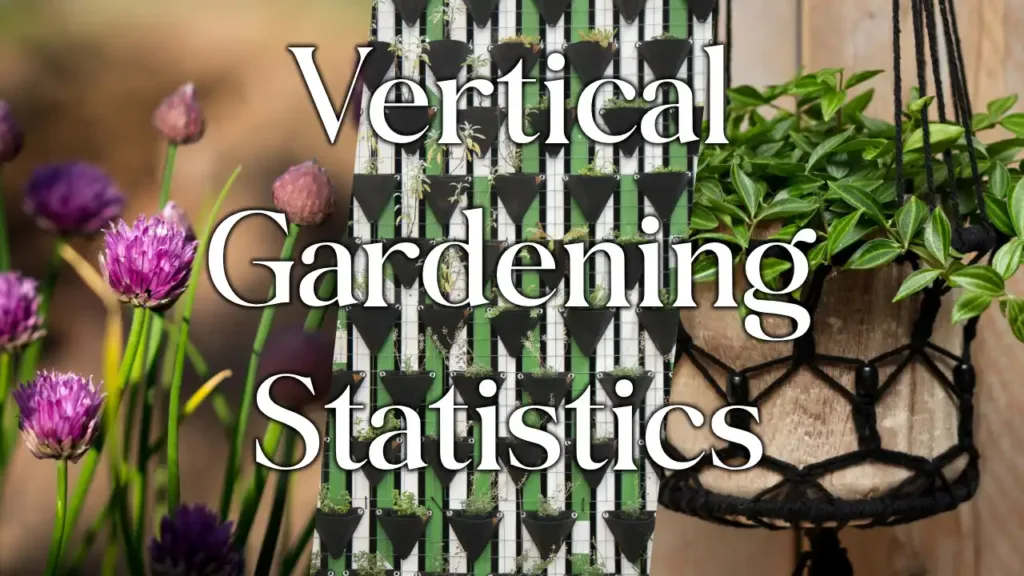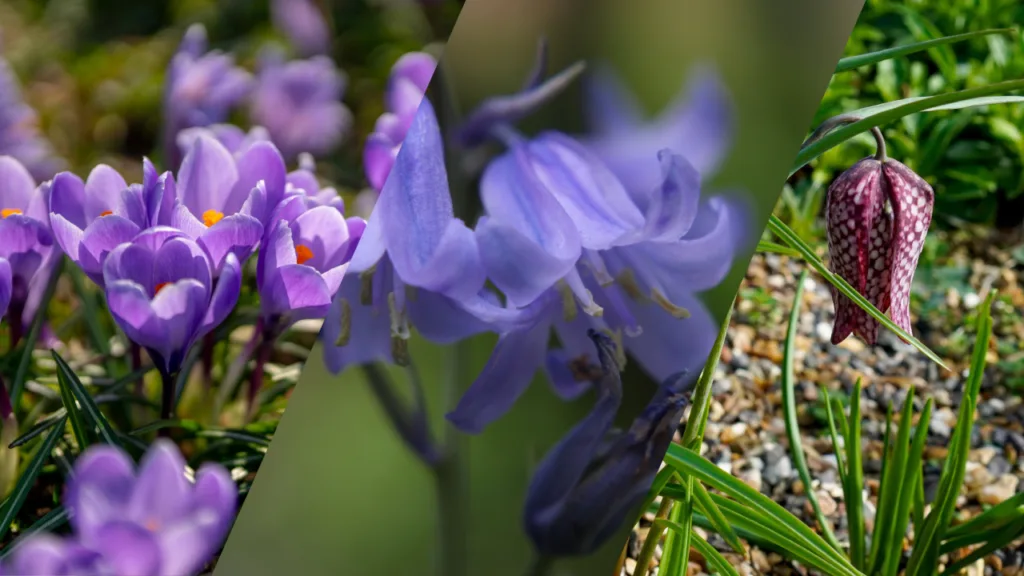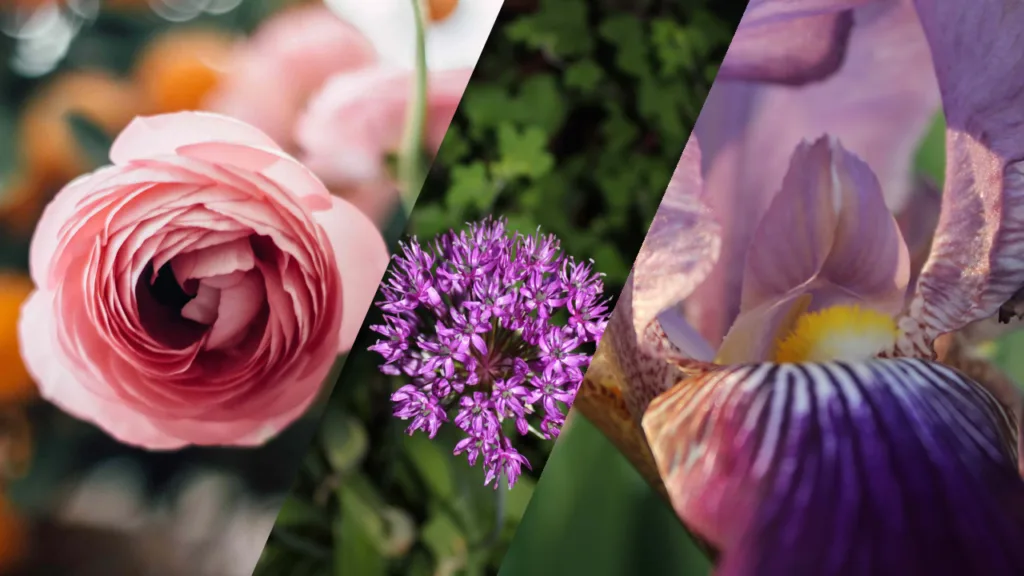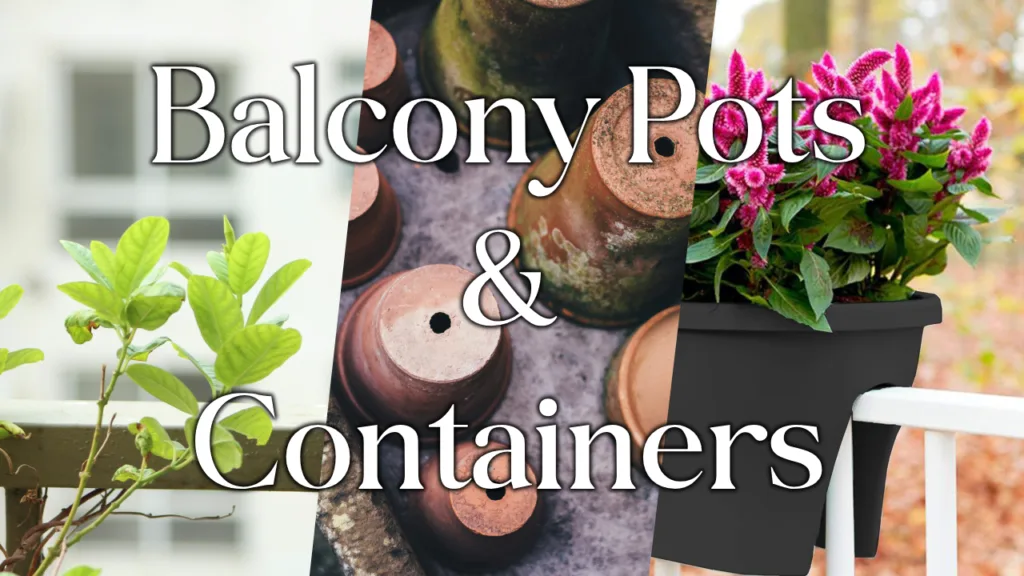Over the last few years, we’ve seen many people preaching about the benefits and potential future impacts that vertical gardening may have on the gardening market as a whole.
However, while public interest in vertical gardening is definitely on the rise, the actual number of individual gardeners using this method is largely unknown.
So that’s why we at Our Country Garden decided to take matters into our own hands by surveying 524 gardeners to understand how much vertical gardening is truly taking root.
Key Takeaways
Here’s a summary of our key findings and most interesting statistics:
- 98% of gardeners have heard about vertical gardening. We knew this number would be high, but weren’t expecting this many people to have heard of it.
- While vertical gardening has been slowly growing in popularity for the last few decades, in the last 10 years it’s skyrocketed, with awareness growing by 260% between 2014 and 2024.
- This increase in awareness is translating into actual use, as 60% of gardeners currently use vertical gardening methods.
- Gardeners choose vertical containers for their looks and productivity more than anything else.
- Hanging baskets, windows boxes and wall planters are the most popular vertical gardening containers.
- Gardeners spend $250 per year on average on their vertical gardens.
- Gardeners use 3 different types of vertical containers on average in their gardens.
- 39% of vertical gardeners grow herbs, making them the most popular plant type to grow in vertical gardens.
About This Survey
We surveyed 524 gardeners with varying levels of experience, from complete beginners to seasoned experts with over 20 years spent gardening. The majority of our participants had moderate gardening experience, ranging from 3 to 9 years, yet our survey captured a wide distribution across different levels of expertise.
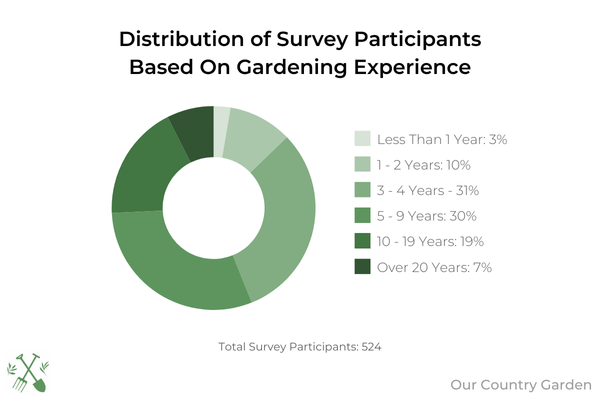
We also asked participants whether their primary gardening space was a balcony, rooftop, allotment, traditional garden or inside space. We cross referenced this figure with a handful of other data points later in this article, which gave us some very insightful results which we’ll explore later in this article.
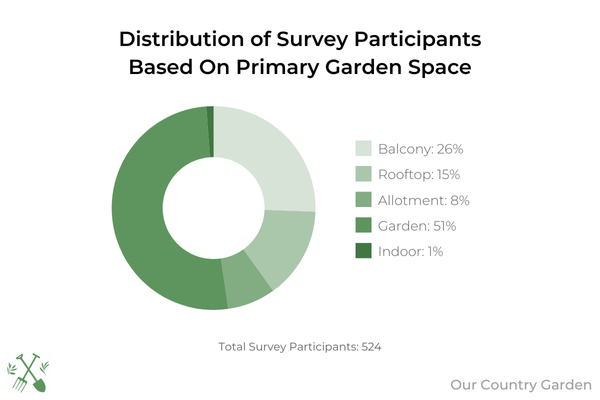
98% of Gardeners Have Heard of Vertical Gardening
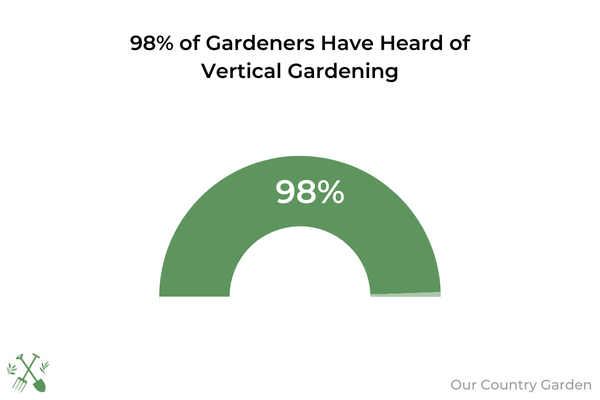
A figure that was shockingly high to us, 98% of gardeners that we surveyed had already heard about vertical gardening. This figure is likely influenced by heightened media coverage of vertical gardening in the last few years as well as the increasing availability of vertical gardening solutions in garden centres.
⚠️ Survey Limitation: This number might be influenced by the participants in the study, as they were sourced from online communities where people could be more up to date with gardening trends.
Awareness of Vertical Gardening Has Increased By Over 260% In The Last 10 Years
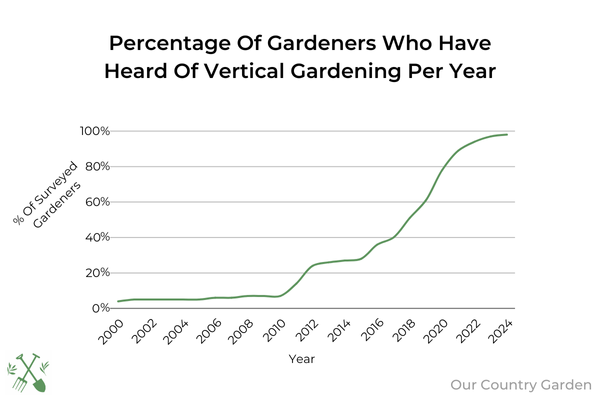
The public’s awareness of vertical gardening has been slowly increasing since 2000, going up by 2475% to date. The most rapid growth in awareness has happened in the last 10 years between 2014 and 2024, with awareness increasing by 267.9%.
60% of Gardeners Use Vertical Gardening
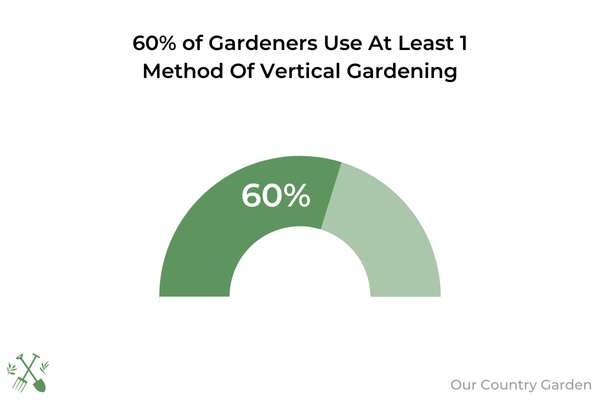
The increase in the public’s knowledge of vertical gardening is making a difference, as we can see that 60% of gardeners use at least 1 form of vertical gardening, whether that be trellises, vertical planters, or hanging baskets. This shift towards using vertical gardening methods shows a growing preference for space-efficient and visually appealing garden solutions.
As more gardeners adopt these techniques and vertical gardening solutions continue to be more accessible to the general public, we expect this figure to keep on rising.
The Number of Gardeners Using Vertical Gardening Methods Has Increased 203% In The Last 10 Years
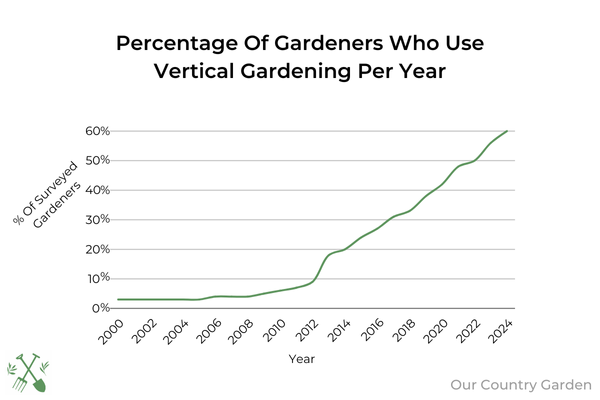
The number of gardeners using at least 1 vertical gardening method in their garden has also been steadily increasing, from 3% in 2000 to 60% in 2024. The largest increase being between 2014 and 2024, with an increase of 203%.
This trend largely follows the initial increase in understanding from the general public about gardening which first happened in 2012 and continued between 2014 and 2024.
People Choose Vertical Gardening Containers For Their Looks And Productivity
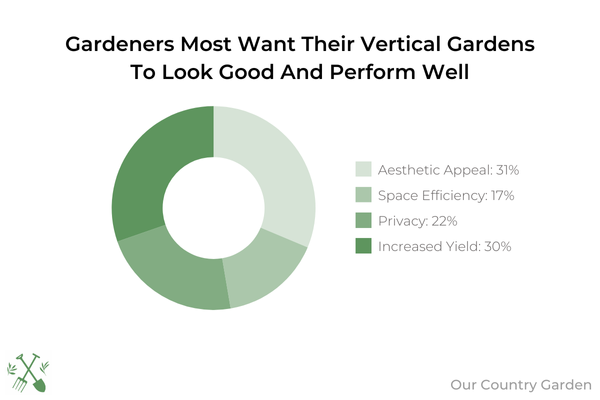
On the whole, gardeners are choosing vertical gardening to increase their yield (30%) and improve the aesthetics of their space (31%). This seems to make sense, given that most vertical gardening content posted on blogs and social media accounts mention the benefits of increasing the productivity of a space and creating a trendy look.
Vertical Gardening Preferences Vary Depending On The Space
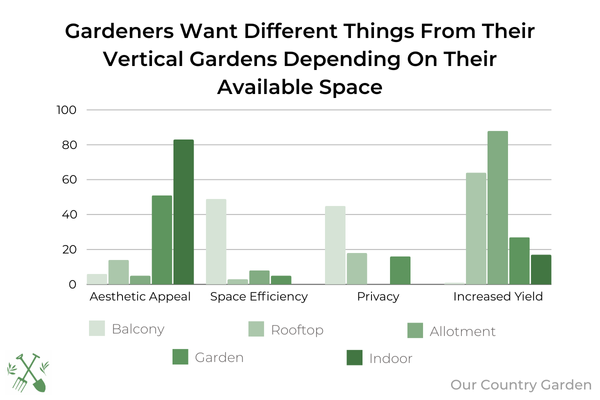
Unsurprisingly, the most important factor of a vertical garden changes depending on the type of space a person has. Our vertical garden study shows that gardeners with traditional outdoor gardens and indoor spaces prefer their vertical gardens to be more aesthetically appealing than any other sector.
Gardeners with a balcony garden however look for space efficiency and privacy above all else, overshadowing all other space types in these regards. Gardeners with rooftop gardens or allotments are most likely to want an increased yield from their vertical gardening setups.
Below you can see the percentages for each space type.
| Aesthetic Appeal | Space Efficiency | Privacy | Increased Yield | |
| Balcony | 5% | 49% | 45% | 1% |
| Rooftop | 14% | 3% | 18% | 65% |
| Allotment | 5% | 8% | 0% | 87% |
| Garden | 51% | 5% | 16% | 28% |
| Indoor | 83% | 0% | 0% | 17% |
Hanging Baskets, Window Boxes and Wall Planters Are The Most Popular Vertical Gardening Containers
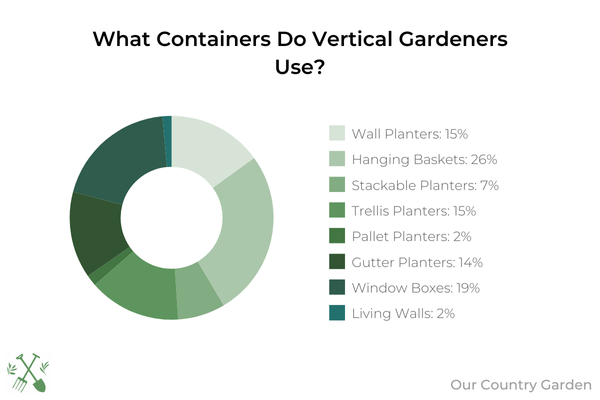
When asked to mention every vertical gardening container they used, gardeners repeatedly mentioned hanging baskets (26%), windows boxes (19%) and wall planters (15%).
While these top 3 spots weren’t too surprising to us as they’ve all been sold in garden centres for decades, we were amazed by how close the other containers were to overtaking them, such as trellis planters at 15% and gutter planters at 14%.
Gardeners Use On Average 3 Different Types of Containers For Vertical Gardening
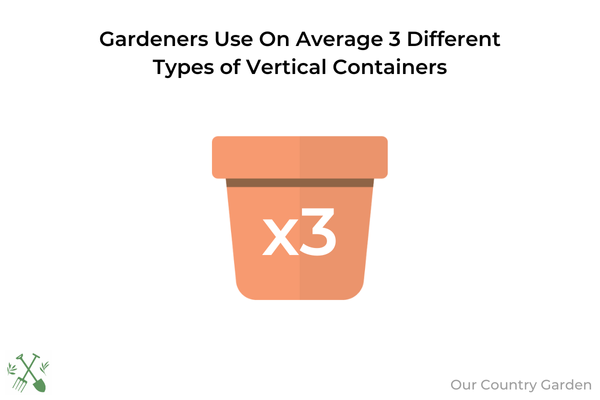
Our survey also showed that on average, gardeners use 3 different types of vertical gardening containers in their garden. This proves that gardeners are using diverse methods to maximise their gardening space and potential returns from their produce.
Herbs Are The Most Popular Plant To Grow In Vertical Gardens
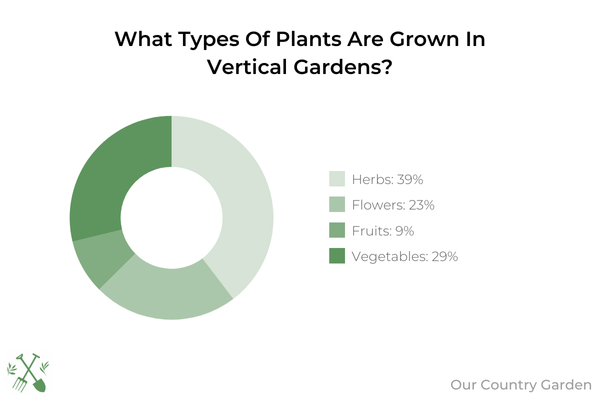
As expected due to how easy they are to grow in containers, herbs were the most popular type of plant grown in vertical gardening setups with 39% of gardeners including them. Vegetables followed with 29% of gardeners using them.
Surprisingly to us, flowers followed closely behind with 23% or gardeners including them. This shows that almost one quarter of gardeners are looking to vertical gardening to increase the efficiency of their non-edible plant growing.
Gardeners Spend $250 Per Year On Average On Their Vertical Gardens
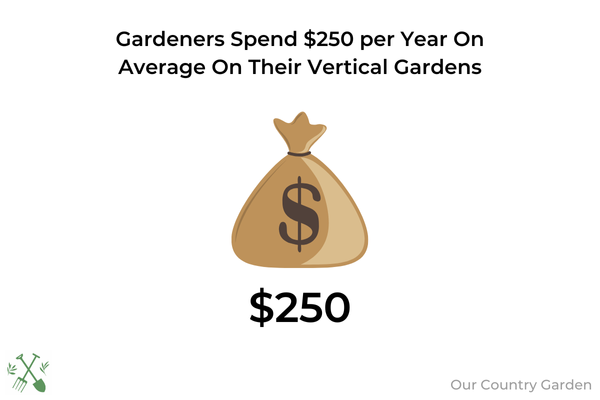
Vertical gardening is big business, with gardeners spending an average of $250 per year on their vertical gardening setup. This shows that with the increasing awareness and uptake of vertical gardening, we’re likely to see a huge increase in the value of the vertical gardening market in the years to come.
This also shows that vertical gardening is becoming a key part in a lot of people’s gardens, as this figure makes a large dent in the average £670 per year spend that the average gardener makes. on their garden as a whole
Gardeners Are Turning To Websites, Social Media and Videos To Learn About Vertical Gardening
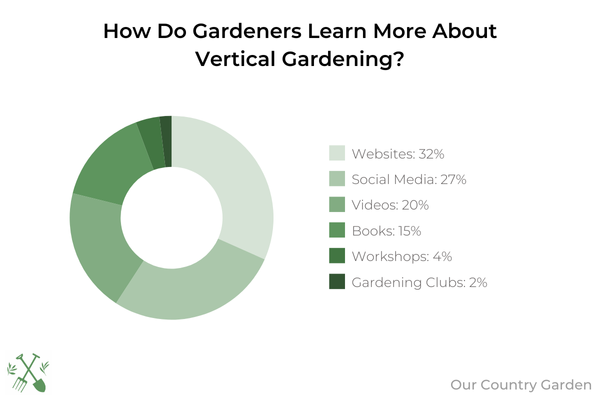
When asked how they learn about vertical gardening methods, the top 3 answers that gardeners gave were through websites (32%), social media (27%), and videos (20%). This surprised us as we expected more traditional sources to be more popular.
However, books accounted for 15%, workshops for 4%, and gardening clubs for 2%, indicating that while digital resources are the most popular resource, there is still a notable demand in conventional learning methods.
Summary
That concludes our vertical gardening survey.
Do you agree with the findings? Are there any questions you think we should include in a future survey?
If so, get in touch to let us know or take a look at some of our other vertical gardening resources.

